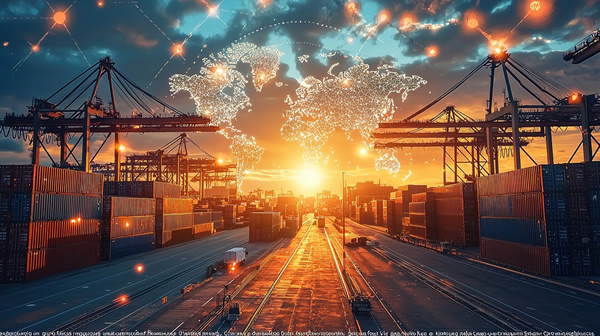
Posted: 09 April 2025
Based on a large number of enquiries and understandable concern from our members, Sassda Executive Director Michel Basson unpacks the impact of tariffs and trade barriers on South Africa’s stainless steel value chain. What’s clear is that with input costs rising, global competition intensifying, and local industries under pressure, an economic battle is underway, and the role of duties and protective measures is under scrutiny like never before…
What Are Tariffs?
Tariffs are a type of trade barrier that makes imported goods more expensive than local ones. Typically, they take the form of taxes or duties placed on imports, costs which are eventually passed on to consumers. Tariffs are commonly used as protectionist tools in international trade.
Key points to remember:
- Tariffs are a form of protectionist trade barrier applied in various ways.
- They are paid by domestic consumers, not the exporting country.
- Tariffs raise the relative prices of imported goods.
- Other trade barriers include quotas, licensing, standardisation rules, and local content requirements. These tools also make foreign goods more expensive or harder to access, giving local products a competitive edge.
Why Are Tariffs and Trade Barriers Used?
- Protecting Local Jobs
Tariffs can shield local industries from foreign competition. Without such protection, cheaper imports may force local businesses to cut jobs or move production abroad. While this may save jobs in the short term, it can harm long-term growth if local productivity doesn’t improve. Artificial protection often results in inefficient industries that can't compete globally. - Protecting Consumers
Governments may impose tariffs on products considered unsafe or hazardous. For example, a tariff on imported food could be introduced if there's concern about contamination or disease. - Supporting Emerging Industries
Developing economies sometimes use tariffs to protect start-up or sensitive industries. This raises import prices and encourages local production, with the goal of reducing unemployment and moving up the value chain. However, this strategy can be risky. Without competition, protected industries may produce poor-quality goods at higher prices. Subsidies to keep these industries afloat can also divert resources from more deserving sectors. - National Security
Certain industries—especially those related to defence - are considered strategically important. Developed countries often use tariffs to protect these sectors. - Retaliation
Tariffs are sometimes used as a tool of retaliation. For instance, if France believes another country mislabels its local sparkling wine as "Champagne," it might impose tariffs on goods from that country in response.
Common Types of Tariffs and Trade Barriers
Specific Tariffs
A fixed fee charged per unit of an imported product. The amount may vary depending on the product type.
Ad Valorem Tariffs
A tariff based on a percentage of the product’s value. For example, a 10% ad valorem tariff on South African shoes sold in Japan would raise the price from R1 000 to R1 100 - making local Japanese shoes more competitive.
Non-Tariff Barriers:
- Licenses: Governments may require licenses for importing certain goods, restricting competition and driving up prices.
- Import Quotas: Limits on the volume of specific goods that can be imported. For example, the EU restricts imports of stainless steel primary products from South Africa.
- Voluntary Export Restraints (VERs): An exporting country agrees - often under pressure - to limit exports. The importing country may reciprocate with similar restrictions.
- Local Content Requirements: A rule that a certain percentage of a product must be made locally, either by component or by value.
Who Really Benefits from Tariffs?
Tariffs benefit some groups more than others. They increase government revenue and help domestic industries by limiting competition. However, consumers bear the cost through higher prices. For example, if tariffs raise the cost of steel, businesses and individuals who rely on steel products pay more. In essence, tariffs tend to benefit producers while hurting consumers.
Sassda’s Role on Tariffs and Duties
Sassda represents the full stainless steel value chain in South Africa. Its members include both importers and local producers - some may support duties; others may oppose them.
Sassda’s mandate is to promote local value addition in stainless steel. It acknowledges that no industry is isolated from global markets - there will always be both imports and local suppliers. Healthy competition between the two must be managed to benefit the local sector, its workers, and the national economy.
Sassda’s role is to facilitate the process of applying for, supporting, or objecting to tariffs. In 2025, it aims to expand its research and provide unbiased market data on imports and exports to better support the industry. This includes identifying and challenging substandard or unfairly subsidised imports - often referred to as "dumped" goods, which are sold below production cost. Such practices distort markets and damage local industries.
While Sassda may not take a direct stance on every tariff issue, it remains committed to putting South Africa’s interests first.

